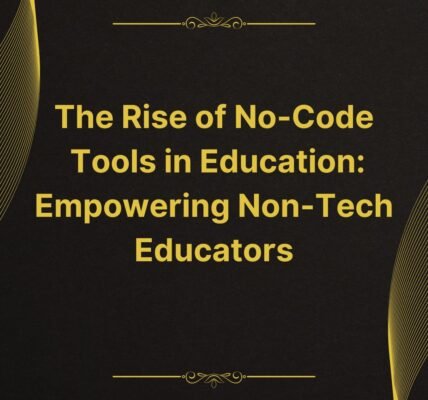In 2024, the importance of STEM (Science, Technology, Engineering, and Mathematics) education continues to grow, as these fields are critical in preparing students for a rapidly evolving. And technology-driven world. Schools around the globe are actively adopting new strategies to foster innovation and critical thinking in students through STEM education, ensuring they are well-prepared to tackle future challenges.
This blog will explore how STEM education is evolving in 2024, the key benefits it brings to students and educators, and how schools can better integrate STEM subjects into their curriculum.
The Importance of STEM Education in 2024
Educators and industry leaders have long recognized STEM education as essential for developing the skills needed in the 21st-century workforce. The World Economic Forum predicts that jobs in STEM-related fields will grow significantly in the coming years, driving increased demand for professionals in technology, data science, engineering, and healthcare.
In 2024, this demand is even more pressing, as automation, artificial intelligence, and digital transformation continue to disrupt traditional industries. By prioritizing STEM education, schools can ensure that students are not only prepared for future jobs. But are also capable of driving innovation and solving complex problems.
How STEM Education in 2024 is Different
1. Incorporation of Emerging Technologies
STEM Education in 2024 is being transformed by the incorporation of emerging technologies. Virtual reality (VR), augmented reality (AR), robotics, and artificial intelligence (AI) are no longer just buzzwords; they are being integrated into everyday learning experiences.
For example, students are using VR headsets to explore complex scientific concepts, such as the structure of the human body, in a 3D virtual environment. Robotics kits are becoming more affordable and widely used. Resulting in enabling students to learn about engineering and coding by building their own robots. AI is also playing a role in STEM education by providing personalized learning experiences, where AI-powered platforms adapt lessons to fit individual students’ needs.
2. Cross-Disciplinary Learning
Another major trend in STEM education in 2024 is the move toward cross-disciplinary learning, often referred to as STEAM (Science, Technology, Engineering, Arts, and Mathematics). By integrating the arts into STEM education, schools can encourage creativity and innovation. Design thinking, problem-solving, and creative approaches to technical challenges are becoming central to the STEM curriculum.
The STEAM approach helps students not only excel in technical fields but also develop critical thinking skills that are applicable across a range of subjects. For instance, students may design prototypes using engineering principles while applying artistic creativity to their design. And fostering both analytical and creative thinking.
Fostering Critical Thinking Through STEM
Encouraging Problem-Solving and Innovation
One of the key goals of STEM education in 2024 is to foster critical thinking skills in students. Through hands-on projects, students are encouraged to solve real-world problems using the scientific method and engineering principles. Whether they are designing a sustainable energy solution or coding a new software application, students are learning to approach problems from multiple angles.
Schools are increasingly adopting project-based learning (PBL) within their STEM curriculum, where students work on long-term projects that require them to research, plan, and execute a solution to a complex problem. This approach not only encourages critical thinking. But also helps students develop collaboration and communication skills, which are vital for success in STEM careers.
STEM Challenges and Competitions
Another effective way to foster innovation and critical thinking in schools is through STEM challenges and competitions. Many schools are now participating in global competitions such as the FIRST Robotics Competition, where students collaborate to build robots that can complete specific tasks. These competitions motivate students to think creatively and apply their knowledge of STEM concepts to solve challenges in a competitive environment.
The Benefits of STEM Education for Students
1. Building Future-Ready Skills
One of the most significant benefits of STEM education in 2024 is that it equips students with future-ready skills. These skills go beyond technical knowledge; students also develop critical thinking, creativity, collaboration, and communication abilities, which are essential for navigating the complexities of the modern workforce.
In a world where automation is increasingly replacing routine jobs, the ability to think critically, innovate, and adapt is becoming more valuable than ever. Students who engage in STEM education are more likely to develop these transferable skills, making them well-prepared for careers that do not yet exist.
2. Encouraging Diversity in STEM Fields
A growing focus in STEM education in 2024 is encouraging diversity in STEM fields. Historically, women and minority groups have been underrepresented in STEM careers, but educational initiatives are working to close this gap.
Schools are launching programs aimed at increasing the participation of girls and students from underrepresented backgrounds in STEM subjects. By providing role models, mentorship programs, and scholarships, these initiatives are helping to create a more diverse STEM workforce that can bring a wider range of perspectives to the table.
How Schools Can Improve STEM Education in 2024
1. Investing in Teacher Training
A critical aspect of improving STEM education in 2024 is investing in teacher training. Teachers need to be well-versed in both the content and the technologies used in STEM education. Many schools are now providing professional development opportunities for teachers to enhance their skills in coding, robotics, and other STEM-related subjects.
Furthermore, teachers are being trained to implement project-based learning strategies and interdisciplinary approaches that foster critical thinking. By equipping teachers with the right tools and knowledge, schools can better support their students’ STEM education.
2. Expanding Access to Resources
For STEM education to be successful, students need access to the right resources. This means providing students with access to technology such as computers, 3D printers, and robotics kits. Schools should also ensure that students from all backgrounds, including those in underserved communities, have access to high-quality STEM education.
Collaborations with local businesses, universities, and government agencies can help schools secure funding and resources to support STEM initiatives. These partnerships can also create opportunities for students to engage in internships, mentorships, and hands-on learning experiences that enrich their education.
Conclusion
STEM education in 2024 is critical in fostering innovation, creativity, and critical thinking in schools. As technology continues to advance, it is essential that students are equipped with the skills and knowledge needed to succeed in a rapidly changing world. By investing in STEM programs, training teachers, and providing access to cutting-edge technologies, schools can prepare the next generation of innovators, problem solvers, and leaders.





